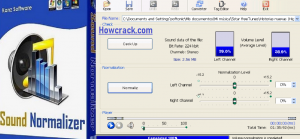

This document was produced by a group operating under If you wish to make comments regarding this document, please file an issue on the specification repository or send them to ( subscribe, archives). This document was produced by the Web Audio Working Group as a Recommendation.įuture updates to this Recommendation may incorporate new features. W3C recommends the wide deployment of this specification as a standard for the Web. Ī W3C Recommendation is a specification that, after extensive consensus-building, has received the endorsement of the W3C and its Members.

Other documents may supersede this document.Ī list of current W3C publications and the latest revision of this technical reportĬan be found in the W3C technical reports index at. This section describes the status of this document at the time of its publication. Please check the errata for any errors or issues reported since publication. Raymond Toy (until Oct 2018) Chris Wilson (Until Jan 2016) Chris Rogers (Until Aug 2013)
#SOUND NORMALIZER ONLINE HOW TO#
Cool augmentation examples on diverse set of images from various real-world tasks.Įxamples of how to use Albumentations with different deep learning frameworks ¶
#SOUND NORMALIZER ONLINE CODE#
Each notebook includes a link to Google Colab, where you can run the code by yourself. The "Examples" section contains Jupyter Notebooks that demonstrate how to use various features of Albumentations. They describe what image augmentation is, how it can boost deep neural networks' performance, and why you should use Albumentations.Īrticles in the "Getting started with Albumentations" section show how you can use the library for different computer vision tasks: image classification, semantic segmentation, instance segmentation, and object detection, keypoint detection. If you are new to image augmentation, start with articles in the "Introduction to image augmentation" section. Albumentations is written in Python, and it is licensed under the MIT license. The library is widely used in industry, deep learning research, machine learning competitions, and open source projects. Welcome to Albumentations documentation ¶Īlbumentations is a fast and flexible image augmentation library. Geometric transforms ()ĭomain adaptation transforms (augmentations.domain_adaptation)įunctional transforms (augmentations.functional) Helper functions for working with keypoints (_utils)īlur transforms ()Ĭrop functional transforms ()Ĭrop transforms ()ĬhannelDropout augmentation (_dropout)ĬoarseDropout augmentation (_dropout)Ĭutout augmentation () Helper functions for working with bounding boxes (_utils) Transforms Interface (ansforms_interface) Semantic segmentation on the Pascal VOC datasetĪlbumentations Experimental Transforms (ansforms)īlog posts, podcasts, talks, and videos about Albumentationsįrameworks and libraries that use Albumentations Image classification on the ImageNet dataset Image classification on the CIFAR10 dataset How to use a custom classification or semantic segmentation model Simultaneous augmentation of multiple targets: masks, bounding boxes, keypointsĪ list of transforms and their supported targetsīenchmarks and a comparison with baseline augmentation strategies Examples of how to use Albumentations with different deep learning frameworksīounding boxes augmentation for object detection


 0 kommentar(er)
0 kommentar(er)
